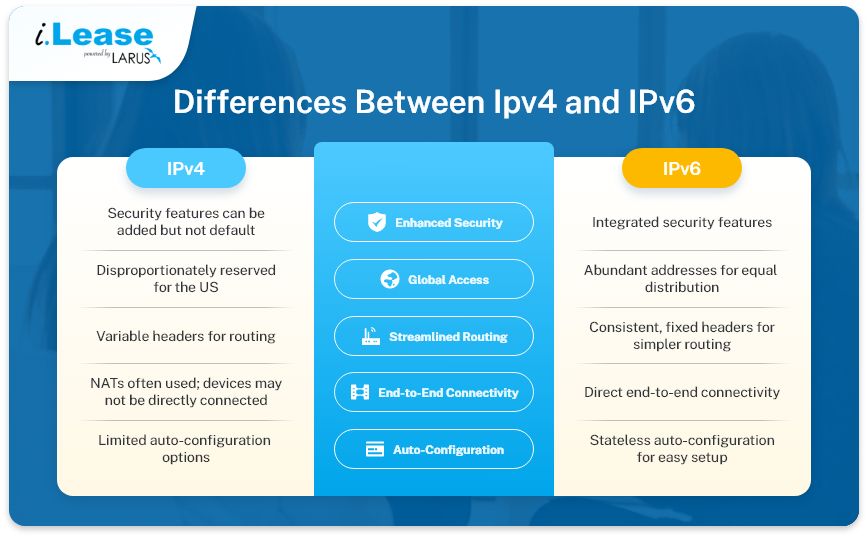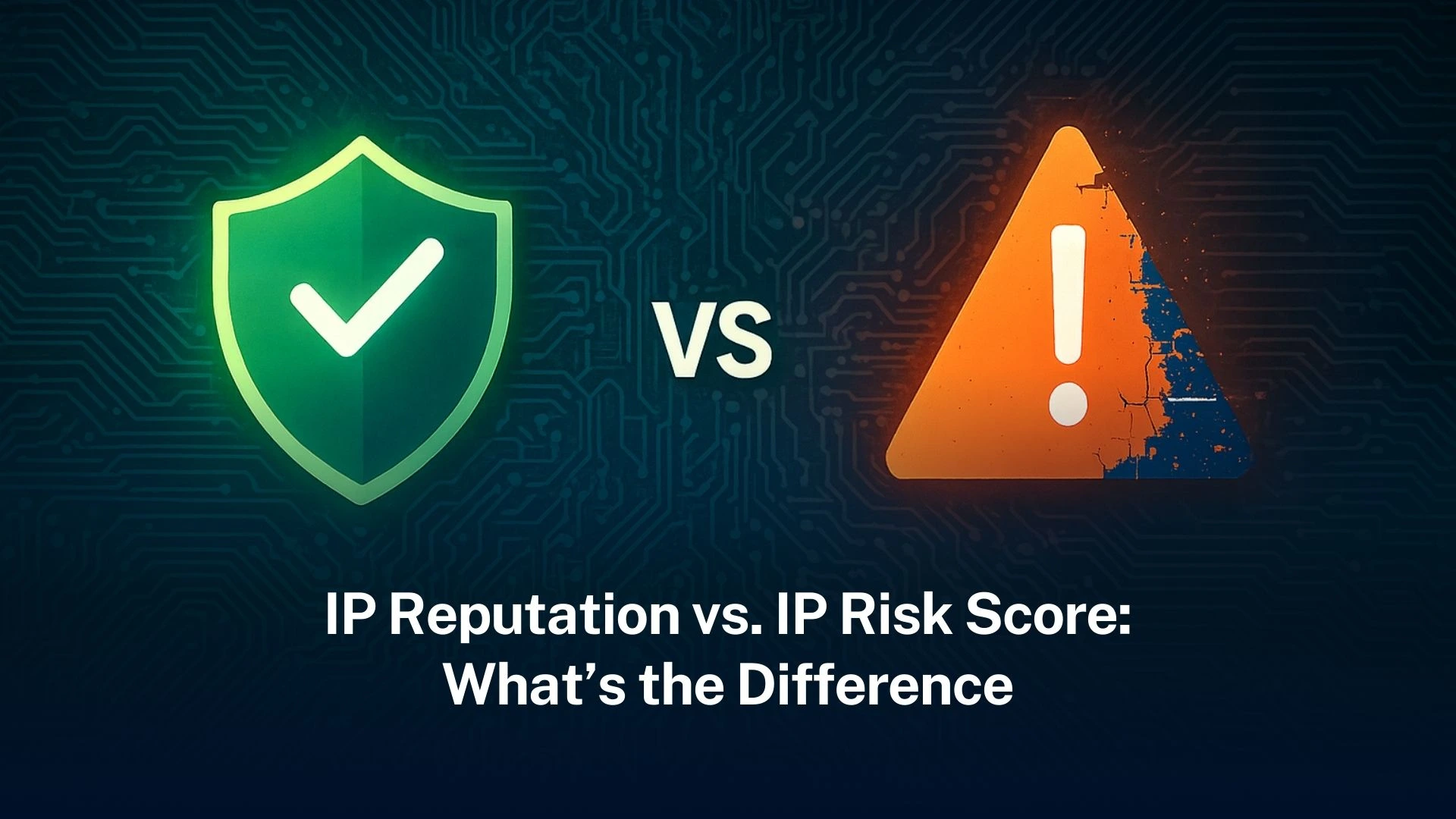Understanding the Difference Between Ipv4 and IPv6

When a device connects to a network, it needs to follow a certain standard. This standard, called Internet Protocol, allows a device to communicate with other devices.
Whether it’s over the Internet or on a local network (like a home or office network), a device needs a network address. A device receives a network address once it connects to a network, typically through a router.
To communicate over the Internet, a device uses an IP address.The Internet Protocol (IP) standardizes how data are structured and how addresses on the Internet must be formatted to deliver data to their destination.
1.0 IP Address Types
Each device that uses “Internet Protocol” can communicate with other devices that can use the same protocol. These devices can be computers, phones, or even toasters. The Internet Protocol addresses can be “public” and “private.”
a. Public IP Addresses
Public IP addresses have direct access to the Internet. An Internet Service Provider (ISP) assigns these addresses to devices like your home router. They allow devices to be reachable from the outside world.
b. Private IP Addresses
Private IP addresses have no direct access to the internet and connect through your home or office router. These addresses are accessible only within private networks such as local networks (LAN) or virtual private networks (VPN).
Your home or office router has a public address. But it also assigns private addresses to devices within your private network. It is related to NAT (Network Address Translation), We will talk a bit later.
Network Address Translation (NAT)
When a private network connects to the Internet and sends out data through a router, the router uses Network Address Translation (NAT).NAT allows multiple devices in a private network to share a single public IP address.
However, it makes it challenging for devices with private addresses to provide services on the Internet as they are not easily reachable from the outside.
2.0 What is IPv4?
You can use NAT only in the fourth version of the Internet Protocol, known as IP version 4 (IPv4). An IPv4 address is made up of four blocks of numbers ranging from 0 to 255 separated by dots.
These four numbers are four groups of eight binary digits (bits). IPv4 addresses are expressed as decimal numbers for readability.For clarity, let’s look at a common IP address: 192.168.0.1.
The table below shows how IPv4 is a binary system represented by decimal digits, for easier readability.
| Decimal | Binary |
| 192 | 11000000 |
| 168 | 10101000 |
| 0 | 00000000 |
| 1 | 00000001 |
3.0 What is IPv6?
The problem with IPv4 is that it provides only approximately 4.3 billion addresses.
4.3 billion is such a small number when we factor in the increasing number of devices connecting to the internet.
To address this limitation, IPv6 was introduced. An IPv6 address is made up of eight blocks of 16-bit numbers. Each block is separated by colons and represented in hexadecimal format. IPv6 uses 128 bits for each address.
In plain speak, an IPv6 address is much longer compared to an IPv4 address. Letters and numbers make up an IPv6 address.
This is an example of an IPv6 address:2001:0db8:85a3:0000:0000:8a2e:0370:7334
4.0 Ipv4 vs IPv6 : A Comparison
IPv4 is still the most commonly used version of the Internet Protocol. That’s why there’s a huge demand for it. However, IPv6 offers more in terms of performance and security. In this section, we’ll look into IPv4 vs. IPv6.

1. Enhanced Security
IPv6 was designed with integrated security features. While these features can be added to IPv4, they don’t come pre-configured as in the case with IPv6.
2. Global Access
Around 50% of IPv4 addresses were initially reserved for the US, leading to uneven distribution worldwide. In contrast, IPv6 addresses are in higher abundance. Therefore, they can be equally distributed worldwide.
3. Potential for Streamlined Routing
Each IP version has a certain number of headers (or information fields). Some of these fields tell the computers about the type of data, the size of the packet (the data being sent), the source address (where it’s coming from), and the destination address (where it’s going).
IPv6 employs consistent and fixed headers, unlike IPv4’s variable headers. This could simplify the routing code and reduce hardware processing requirements.
4. Direct End-to-End Connectivity
There is enough IPv6 to go around, leaving NATs unnecessary.
With IPv6, each device can directly connect to the internet and communicate with websites without intermediary network address translations.
However, this creates a potential downside: devices that use IPv6 might be more vulnerable if they use the same address over the Internet all the time. The fix is to use a temporary IPv6 address that changes regularly.
5. Effortless Auto-Configuration
IPv6 offers a feature called stateless auto-configuration. Devices can autonomously assign themselves IP addresses based on their unique MAC addresses. Self-configuration makes it easy for devices to find and connect within the same network.
5.0 How Much IPv4 and IPv6 are Used in the World?
As of July 2023, 41% of Google users are using IPv6.
According to APNIC, around 36% of devices are IPv6 capable while 35% are IPv6 preferred. IPv6 is seeing high adoption among various countries. 100% of devices in Bahrain are now using IPv6. The following countries make up the rest of the top 10:
| Country | % of IPv6 Adoption |
| US Minor Outlying Islands | 100% |
| India | 60.9% |
| Malaysia | 57.5% |
| Saudia Arabia | 55.7% |
| France | 55.3% |
| Germany | 55.2% |
| Montserrat | 55.1% |
| Uruguay | 54.5% |
| Belgium | 51.6% |
However, the statistics for IPv6 adoption is lopsided. While some countries are close to a full transition, there are countries in Asia and Africa that barely have any form of IPv6 adoption.
6.0 Why We Haven’t Switched to IPv6 Yet
IPv6 may offer clear advantages. But there are challenges that make its adoption difficult:
6.1 IPv6 devices might not be compatible with devices that run on IPv4.
6.2 There are no clear or immediate benefits for the average user.- Any organization, government, office, or school that wants to upgrade will need upgrades across devices and systems.
7.0 Frequently Asked Questions (FAQ) about Ipv4 vs IPv6
a. What happens when the IPv4 address pool is finally depleted?
Existing devices and networks connected to the Internet using IPv4 addresses will continue to work as they do now. IPv4-based networks are expected to co-exist with IPv6-based networks simultaneously.
b. When will IPv4 addresses actually run out?
The last IPv4 address blocks have already been allocated to the Regional Internet Registries (RIRs). These are either depleted or very close to depletion.
Obtaining new address blocks for future Internet growth will no longer be possible.
c. Is IPv6 more secure than IPv4, or is it less secure?
Debates concerning IPv6 versus IPv4 security often focus on different aspects of network deployment.
IPv6 supports improved security because IP Security (IPsec) was originally developed for IPv6. However, IPsec can also be used with IPv4 — just not built-in.
Reported IPv6 security issues are often related to vulnerabilities in specific products, not the IPv6 protocol itself. Both IPv4 and IPv6 require careful compliance with security practices.
d. Is IPv6 ready for deployment now?
IPv6 is a tried and tested technology deployed since 2002. The core IPv6 specifications have been developed for over 20 years. Major operating systems and software applications are IPv6-ready.
e. Why has it taken so long for IPv6 to be implemented?
The transition to IPv6 didn’t offer immediate advantages in the short term (since people can still get IPv4 by buying or leasing). The switch can also be expensive.
Additionally, the introduction of NAT extended the IPv4 address space, delaying the urgency for IPv6 adoption. Now that IPv4 address space has run out, deploying IPv6 is necessary.
f. How much will the transition to IPv6 cost?
The costs depend on the organization and business. Operational costs, training, and upgrading in-house custom software are potential expenses.
g. I have enough IPv4 addresses today. Why should I bother implementing IPv6?
IPv6 is already widely supported, and more sites will only support IPv6 in the future. Translation mechanisms (like NAT) can negatively impact performance and make troubleshooting complex.
h. Is there a specific date when everything needs to be upgraded to IPv6?
There is no specific date, but organizations should incorporate IPv6 into their upgrade and procurement plans.
i. Will IPv6 addresses run out eventually?
In practical terms, no. IPv6 has sufficient support for trillions of Internet devices in the future.An IPv6 future is near but we’re not quite there yet. If you need reliable connectivity, it might be a good option for you to lease an IPv4 address



